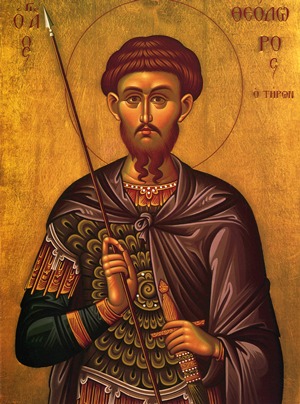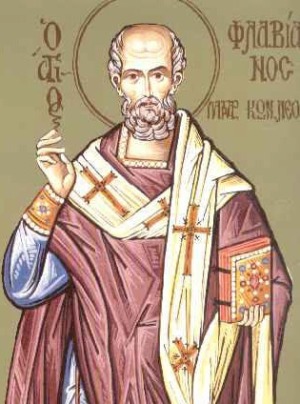The Saint Theodore the Recruit (Tyro) was a soldier under the command of a certain Brincus. They commanded him to offer sacrifice to idols. Martyr Theodore firmly confessed his faith in Christ the Savior in a loud voice. The commander gave him several days to think it over, during which time Saint Theodore prayed.
They charged him with setting a pagan temple on fire, and threw him into prison to be starved to death. The God appeared to him there, comforting and encouraging him. Brought to the governor, Saint Theodore boldly and fearlessly confessed his faith, for which he was subjected to new torments and condemned to burning.
The Saint Theodore climbed onto the fire without hesitation, and with prayer and gave up his holy soul to God. His relics were afterwards transferred to Constantinople, to a church dedicated to him. His head is in Italy, in the city of Gaeto.
His memory is celebrated on February 17.



